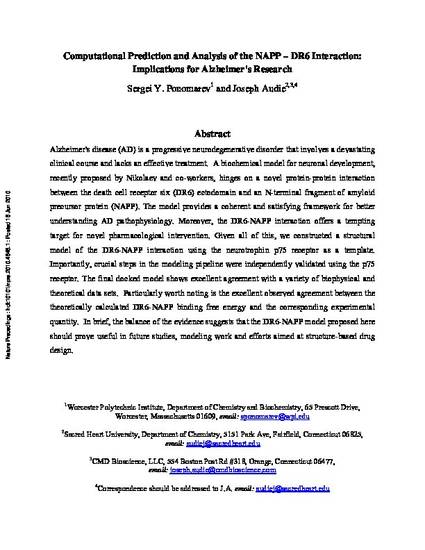
Alzheimer's disease (AD) is a progressive neurodegenerative disorder that involves a devastating clinical course and lacks an effective treatment. A biochemical model for neuronal development, recently proposed by Nikolaev and co-workers, hinges on a novel protein-protein interaction between the death cell receptor six (DR6) ectodomain and an N-terminal fragment of amyloid precursor protein (NAPP). The model provides a coherent and satisfying framework for better understanding AD pathophysiology. Moreover, the DR6-NAPP interaction offers a tempting target for novel pharmacological intervention. Given all of this, we constructed a structural model of the DR6-NAPP interaction using the neurotrophin p75 receptor as a template. Importantly, crucial steps in the modeling pipeline were independently validated using the p75 receptor. The final docked model shows excellent agreement with a variety of biophysical and theoretical data sets. Particularly worth noting is the excellent observed agreement between the theoretically calculated DR6-NAPP binding free energy and the corresponding experimental quantity. In brief, the balance of the evidence suggests that the DR6-NAPP model proposed here should prove useful in future studies, modeling work and efforts aimed at structure-based drug design.
Audie, J., & Ponomarev, S. (2010). Computational prediction and analysis of the NAPP - DR6 interaction: Implications for Alzheimer's research. Nature Preceedings. Doi: 10.1038/npre.2010.4545.1

Open access manuscript.